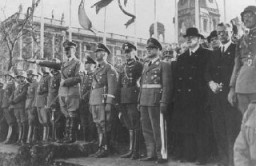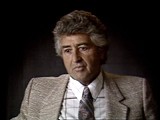You searched for: %E4%B9%B0%E7%90%83%E5%B9%B3%E5%8F%B0,%E4%B9%B0%E7%90%83%E7%BD%91%E7%AB%99,%E4%B9%B0%E7%90%83%E7%BD%91%E5%9D%80,%E3%80%90%E4%B9%B0%E7%90%83%E5%9C%B0%E5%9D%80%E2%88%B63399yule.com%E3%80%91%E4%B8%96%E7%95%8C%E6%9D%AF%E4%B9%B0%E7%90%83%E6%8A%80%E5%B7%A7,%E4%B9%B0%E7%90%83%E8%A7%84%E5%88%99,%E4%B9%B0%E7%90%83app,%E4%B9%B0%E7%90%83%E8%BD%AF%E4%BB%B6,%E3%80%90%E4%B8%96%E7%95%8C%E6%9D%AF%E8%B5%8C%E7%90%83%E5%B9%B3%E5%8F%B0%E2%88%B63399yule.com%E3%80%91
<< Previous | Displaying results 141-150 of 151 for "%E4%B9%B0%E7%90%83%E5%B9%B3%E5%8F%B0,%E4%B9%B0%E7%90%83%E7%BD%91%E7%AB%99,%E4%B9%B0%E7%90%83%E7%BD%91%E5%9D%80,%E3%80%90%E4%B9%B0%E7%90%83%E5%9C%B0%E5%9D%80%E2%88%B63399yule.com%E3%80%91%E4%B8%96%E7%95%8C%E6%9D%AF%E4%B9%B0%E7%90%83%E6%8A%80%E5%B7%A7,%E4%B9%B0%E7%90%83%E8%A7%84%E5%88%99,%E4%B9%B0%E7%90%83app,%E4%B9%B0%E7%90%83%E8%BD%AF%E4%BB%B6,%E3%80%90%E4%B8%96%E7%95%8C%E6%9D%AF%E8%B5%8C%E7%90%83%E5%B9%B3%E5%8F%B0%E2%88%B63399yule.com%E3%80%91" | Next >>
-
Norbert Wollheim describes his experiences on a transport during deportation from Berlin
Oral HistoryNorbert studied law and was a social worker in Berlin. He worked on the Kindertransport (Children's Transport) program, arranging to send Jewish children from Europe to Great Britain. His parents, who also lived in Berlin, were deported in December 1942. Norbert, his wife, and their child were deported to Auschwitz in March 1943. He was separated from his wife and child, and sent to the Buna works near Auschwitz III (Monowitz) for forced labor. Norbert survived the Auschwitz camp, and was liberated by US…

-
Polish Victims
ArticleIn September 1939, the Germans launched a campaign of terror intended to destroy the Polish nation and culture. Learn more about the German occupation of Poland.

-
Warsaw
ArticleIn October 1940, Nazi authorities established the Warsaw ghetto. Learn more about life in the ghetto, deportations, armed resistance, and liberation.

-
Refugees Today
ArticleAs of mid-2022, there were about 27 million refugees. Learn more about these refugees, the violence they face, and the global impact of the refugee crisis.

-
Nazi Territorial Aggression: The Anschluss
ArticleThe Anschluss, Germany's annexation of Austria in March 1938, was the Nazi German regime’s first act of territorial aggression and expansion. Learn more.

-
How did the Nazis and their collaborators implement the Holocaust?
Discussion QuestionWhen Nazi Party leader Adolf Hitler became German chancellor on January 30, 1933, no step-by-step blueprint for the genocide of Jews as a “race” existed. After the outbreak of World War II, millions of Jews came und...

-
Mina Beker
ID CardMina, born Mina Friedman, was the youngest of four daughters born to a Jewish family in the Lithuanian town of Jonava. At the age of 18, Mina married Osser Beker, a lumber dealer. The couple settled in Jonava where Mina worked as a seamstress. The Bekers had two sons and two daughters, but their oldest son died in a childhood accident. 1933-39: Mina's son Abe attended a Jewish religious school in Jonava. But since Mina had received an extensive Jewish education, she decided to teach her daughters at home.…

-
Judith Beker
ID CardJudith was one of three children born to a Yiddish-speaking Jewish family living on a farm near the Lithuanian town of Jonava. Judith's mother had an extensive Jewish education and taught her daughters at home. Her son, Abe, attended a Jewish religious school in Jonava. Judith's father worked in the logging industry. 1933-39: In the fall of 1938, six months after her father died, Judith and her mother moved to Kovno, the capital of Lithuania. She was 9 years old. Kovno at that time had a large Jewish…

-
Abraham Malnik describes massacre in Kovno's Ninth Fort, near the Kovno ghetto
Oral HistoryAbraham came from a wealthy family that was ordered into the Kovno ghetto after the Germans occupied Lithuania in 1941. Abraham's mother urged his father to flee, but he returned for them. Begging for mercy, he was able to save them from a massacre in the Ninth Fort, one of several forts around Kovno. Abraham and his father survived internment in five camps before they were finally liberated in the Theresienstadt ghetto. Abe's mother perished at the Stutthof camp.

-
Robert Wagemann describes fleeing from a clinic where, his mother feared, he was to be put to death by euthanasia
Oral HistoryRobert and his family were Jehovah's Witnesses. The Nazis regarded Jehovah's Witnesses as enemies of the state for their refusal to take an oath of loyalty to Adolf Hitler, or to serve in the German army. Robert's family continued its religious activities despite Nazi persecution. Shortly before Robert's birth, his mother was imprisoned briefly for distributing religious materials. Robert's hip was injured during delivery, leaving him with a disability. When Robert was five years, he was ordered to report…

